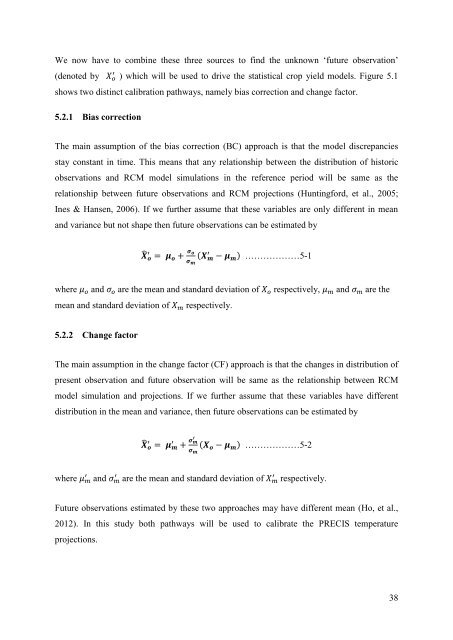UNIVERSITY OF READING - E-Library - WMO
UNIVERSITY OF READING - E-Library - WMO
UNIVERSITY OF READING - E-Library - WMO
You also want an ePaper? Increase the reach of your titles
YUMPU automatically turns print PDFs into web optimized ePapers that Google loves.
We now have to combine these three sources to find the unknown ‘future observation’(denoted by ) which will be used to drive the statistical crop yield models. Figure 5.1shows two distinct calibration pathways, namely bias correction and change factor.5.2.1 Bias correctionThe main assumption of the bias correction (BC) approach is that the model discrepanciesstay constant in time. This means that any relationship between the distribution of historicobservations and RCM model simulations in the reference period will be same as therelationship between future observations and RCM projections (Huntingford, et al., 2005;Ines & Hansen, 2006). If we further assume that these variables are only different in meanand variance but not shape then future observations can be estimated bŷ ( ) ………………5-1where and are the mean and standard deviation of respectively, and are themean and standard deviation ofrespectively.5.2.2 Change factorThe main assumption in the change factor (CF) approach is that the changes in distribution ofpresent observation and future observation will be same as the relationship between RCMmodel simulation and projections. If we further assume that these variables have differentdistribution in the mean and variance, then future observations can be estimated bŷ ( ) ………………5-2where and are the mean and standard deviation of respectively.Future observations estimated by these two approaches may have different mean (Ho, et al.,2012). In this study both pathways will be used to calibrate the PRECIS temperatureprojections.38
















